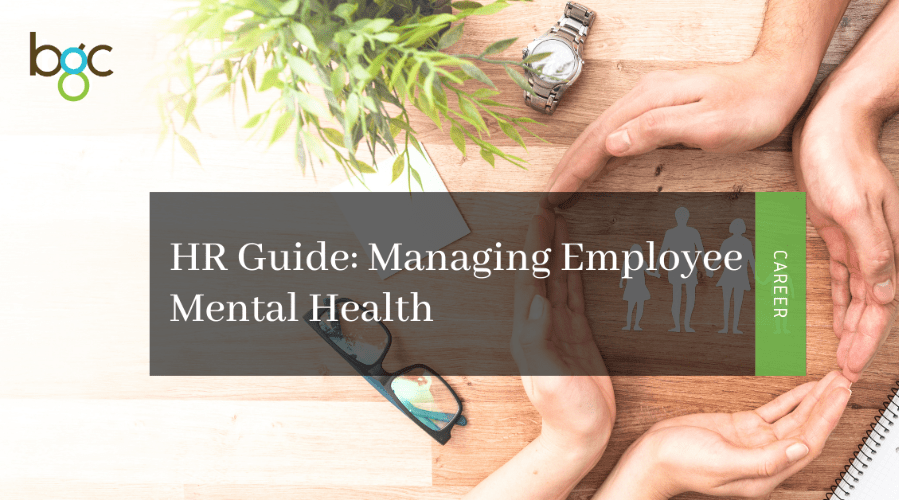Employee well-being and mental health should be at the forefront of every organization. Ever since the COVID-19 days, many organizations have taken an interest in their employee’s mental health. During the pandemic, it is reported that 4 in 10 adults reported symptoms of either anxiety or depression.
The increase in mental health issues has led more individuals to suffer from negative mental health effects such as difficulty sleeping and eating, or even an increase in alcohol consumption and substance abuse. All of this can inadvertently lead to the worsening of an employee’s mental health.
Other issues that can contribute to your employees poor mental health include isolation due to the work from home season, and job loss. In this article, we’ll discuss some of the different ways a good leader or HR representative can identify employees struggling with their mental health. As a HR recruitment organization based in Singapore, we’re on the constant lookout for different tips and ways to manage our employee’s mental well being.
Employee Mental Health During COVID-19
It is no surprise that the COVID-19 work from home season has had detrimental effects on our mental health. Stress, burnout, and unprecedented hours can lead to the decline in employee mental health. There are many different things an organization can do to help employees fight your employee’s declining mental health state. However, the best way to tackle your worker’s declining mental health would be to take action. In other words, you need to prove to your employees that you care about their health.
Some common ways to show your employees that you care about their mental health include:
A. Improve their well-being at work
The unfortunate truth is that employees spend more time at work than at home with their family and friends. As such, it is important to make employees feel comfortable and welcome at all times.
At the company, this can be done through a number of teamwork building activities and scenarios. Since most of us are working from home, it’d be great if the organization could set up a chat room dedicated specifically for employees to express their work and personal issues with one another.
Alternatively, you can appoint a HR employee or executive to brainstorm some team-bonding activities or even as a work counsellor. That way, your employees will have someone to be able to express their personal issues to.
Other ideas for HR to help improve well-being whilst at work include:
1. Encourage employees to take exercise breaks:
Exercise breaks help your employees reduce work-related stress. This can be conducted through Zoom or any other video conferencing programs. You can take this a step further by first surveying and asking your employees what their favourite exercises are, and schedule them with your employees.
Additionally, exercise breaks also allow uptight employees to unwind. Work-related stress can prevent employees from achieving their best selves.
2. Offer workshops related to healthy living:
It may surprise some of you but not all employees have the right tools needed for healthy living. Educating your employees through healthy living and wellness workshops on healthy living might be useful when it comes to managing your employee’s mental health.
Some healthy living workshop topics to think about include:
Healthy diet and eating habits: Your diet and lifestyle has a direct correlation to your productivity rates at work. For instance, studies show that large amounts of carbohydrates can directly impact your productivity rates.
Mental health: Are your employees aware of silent or night-time depression? Or the difference between anxiety and normal nervousness? Mental health is an issue that should be on the forefront of every organization.
Exercise programs: Hold exercise breaks or sessions for your employees. Some popular exercise program ideas include kickboxing, group dance classes, and yoga to name a few. These exercise programs also make a good team bonding activity for your whole office.
B. Identify the Signs of Burnout
Employee burnout is often linked to their mental health. Employees who experience burnout tend to leave their jobs in hopes of nursing their mental health back. As an employee, it is imperative to be able to recognise the signs of job burnout. It might sound surprising but job burnout can also happen when your employees are working from home.
Some common burnout signs that employers and HR managers should look out for include:
Lowered rate of productivity
Frequent absences from work
Unhappy or gloomy employees
Education is One Step Forward
The best thing to do would be to educate your employees about the detrimental effects of not handling their mental health. Teaching your employees to juggle their work and home life can help alleviate potential mental health issues at the workplace.
It is important to understand that burnout occurs when employees are highly engaged but do not receive the support that they need from the organization. Tackling employee burnout is something that HR executives and managers in Singapore should be trained in. One way to navigate this would be to train the HR team to create an open and safe environment for your employees.
For more articles on employee well being and mental health. You might want to check out these recommended readings below:
What are some tips and tricks to help your employees with the well-being and mental health during the pandemic? Share them with us in the comments section below!
Read More: How I Learnt to Manage My Work-Life Balance After Being Diagnosed with Depression
